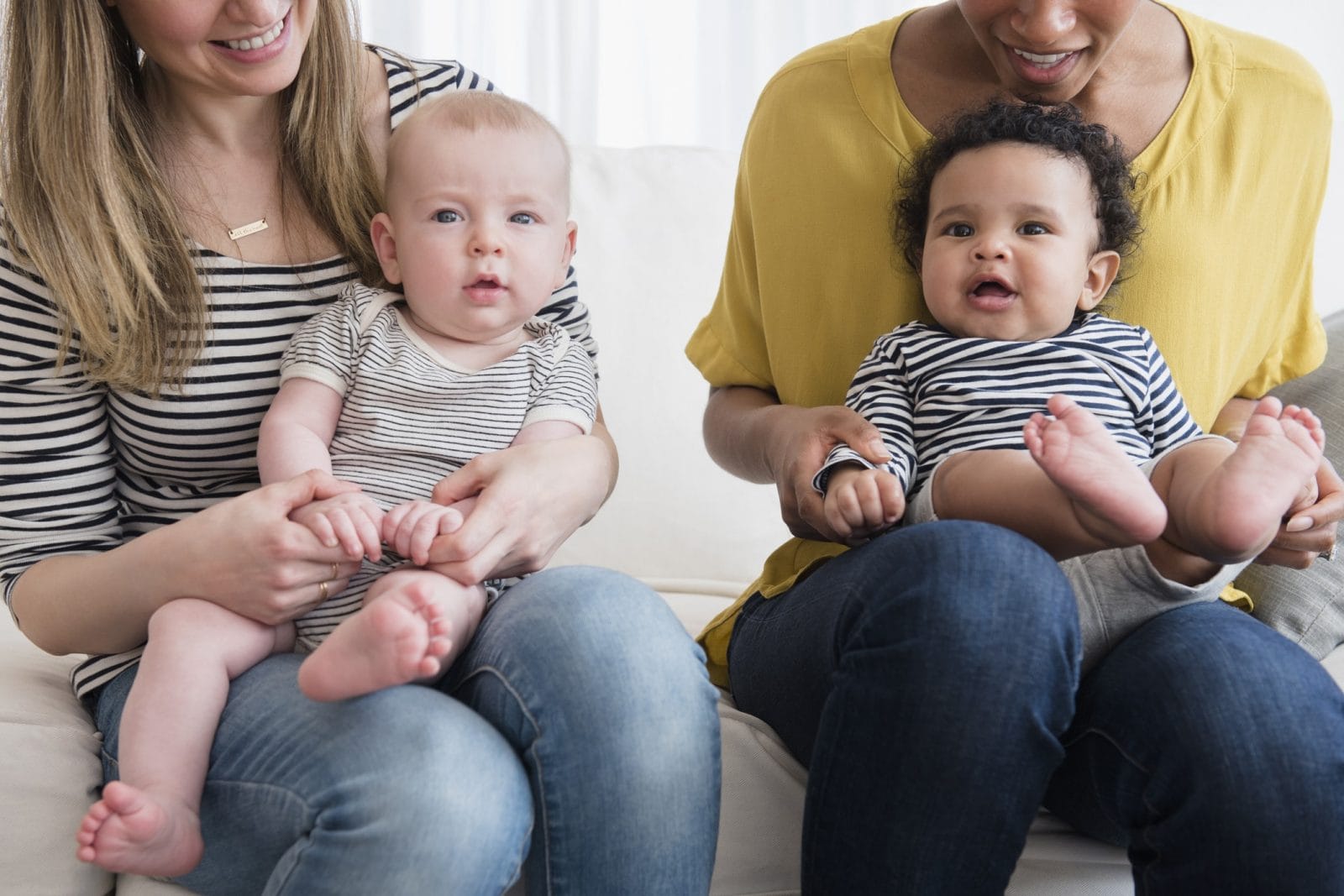6 easy ways to foster anti-racism in babies + toddlers

No child is "too young" to be taught how to be an anti-racist.
Table of Contents
We might not be able to have important conversations about race with our children until they are a few years old, but parents can still begin laying the foundations for anti-racism well before then.
Studies show that babies begin to notice and respond to different skin color cues as early as six months. Although they might not be able to understand the concept of race as a social construct, skin color still plays an important role in developing a sense of self and community.
As humans, we are hard-wired to identify with members of our own community, which is why we will never live in a post-racial society. So-called color-blindness as a parenting strategy amounts to complicity in the problem.
Fostering an awareness of racial diversity is critical from the start and is more likely to lead to appreciation and activism later on.
The implications are different depending on your background—white children need to learn that they are not the majority, and children from minority backgrounds need to see themselves represented in the mix. Children from minority backgrounds often develop a sense of inferiority about their own skin color because they have internalized the lack of positive representations in the media.
So, how do we go about fostering anti-racism in those crucial years before we can have meaningful conversations with our children? Here are six strategies:
1. Read books that include characters with all different skin colors.
This is one of the most common tactics adopted by parents and it is a great way to start. There are a range of board books available for those who still prefer to eat their books, such as A is for Activist and Anti-Racist Baby. And don’t shy away from other picture books as well—even if the content seems over your child’s head, they are still taking in the visuals at the very least.
2. Be mindful that videos + shows include a diversity of skin tones.
Sesame Street does a great job at representing a broad spectrum. Check out their “I Love My Hair!” video. Doc McStuffins and Tinga Tinga Tales are both great choices as well. Keep in mind that you don’t have to specifically watch children’s shows. Watching dance videos from cultures all around the world, for instance, can be eye-opening and makes for a fun excuse to have a dance party. My 2-year old son goes gaga every time I play this video of a Maasai jumping contest for him.
3. Expose your child to different languages.
Dr. Patricia Kuhl from the University of Washington found that even a 1-month-old can hear distinctions in different linguistic sounds, often with more accuracy than adults. This is most commonly touted as a great way to beef up your child’s IQ, but the effects are more wide-reaching than that. A recent study found that preschoolers who are bilingual exhibit less racial bias than those who only speak one language.
While bilingualism might not be in the cards if you only speak one language yourself and don’t have time to pick up a Rosetta Stone, simply showcasing a range of different linguistic sounds can lay a solid foundation for cultural appreciation in your child.
Not sure where to start? Watch a Spanish version of a popular show, such as Blippi. Putumayo Kids has a great collection of international music. Make an effort to engage in the material alongside your child—Dr. Kuhl’s study also found that live interaction is the most effective means of language acquisition.
4. Celebrate racial diversity through art.
This could involve showcasing pieces of art that feature individuals with different skin colors or making your own pictures. Crayola recently released a new set of crayons that include skin tones from around the world. Next time you sit down to draw with your budding artist, work together on pictures that represent the true variety and diversity of humankind.
5. Prioritize racially diverse toys.
There are a range of toys that feature people with different skin colors, such as puzzles, memory cards, and dolls. Dolls, in particular, foster a sense of connection. Debbie Garrett, author of Black Dolls: A Comprehensive Guide to Celebrating, Collecting, and Experiencing the Passion writes, “It’s important for white children to have dolls that represent different ethnicities, to promote cultural diversity and an awareness that we are all one race: human.”
If you’re a boy mom and your child doesn’t have dolls, all the more reason to start now—dolls help boys to develop their nurturing side, amongst other things. What better way than that to take a stand against toxic masculinity from an early age?
6. Build a diverse community.
Join or start a meetup that will get you outside of your normal social circle. Even if you live in a homogenous area, expose your child to different cuisines and cultural traditions from an early age. Model the open-mindedness you wish to cultivate in your child, not just by taking them places, but by engaging with people from all backgrounds. If you are friendly towards others who don’t look like you, your child will keep tabs on this well before they can talk to you about it.
The more you are able to integrate these strategies from an early age, the easier it will be to have the important conversations about race when your child gets older. Dr. Patricia Kuhl notes that we are born as citizens of the world, and as we mature we become culturally bound. By learning to celebrate other cultures, your child will develop inclusive and diverse frameworks that will help shape them for years to come.


































